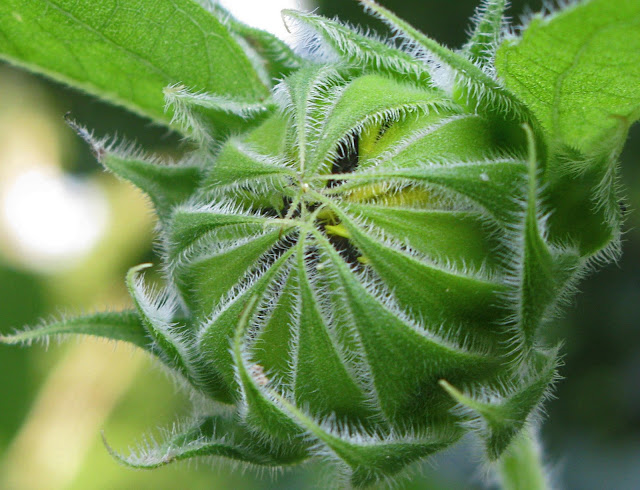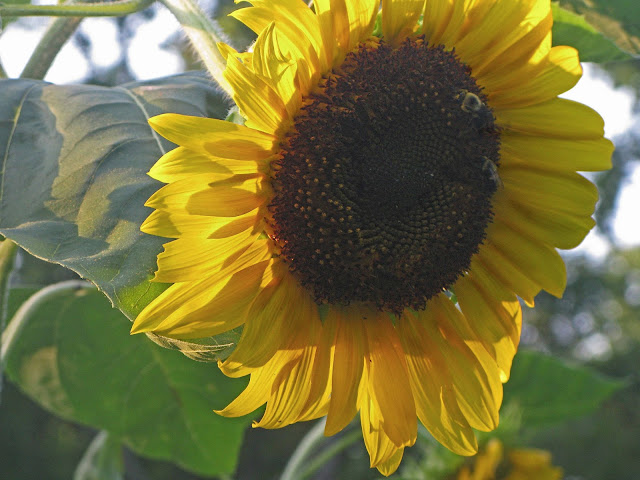Okay, I am in love and rather than scribbling its name on the edge of my notebook paper or drawing hearts on my desk or bringing the name into the conversation every few minutes, I will just work this into a blog post. My love began its life in this country with the Western American Indian two or three thousand years ago.
It was sustenance for all. They ground the seeds for flour and ate the head as a vegetable. Hopi Indians got dyes from the seeds to color their clothes, body and pots. They even discovered medicinal properties for healing skin bites and injuries.
In 1510 the seeds were taken to Spain and then to Russia where it was hybridized and the seeds both eaten and pounded for oil under the reign of Peter the Great. It was Joseph Stalin who hybridized the plant until it produce flower heads over 12 inches in diameter. Then it was returned to this continent in the sacks of the Mennonite farmers that were escaping the purge in Russia and was grown once again by American farmers. One inventor found that the pith in the stem could be used to add float ability to lifebelts such as those worn by survivors on the Titanic.
In 1888 Vincent Van Gogh captured the beauty of this plant while fighting depression. He wrote to his brother, "I am hard at it, painting with the enthusiasm of a Marseillais eating bouillabaisse, which won't surprise you when you know that what I'm at is the painting of some sunflowers." While the sunflower painting did not prevent his suicide, it did sell for $40 million many years later.
The sunflower, Helianthus annuus, produces the world's fourth most popular oil and is a snack and great bird food. Heliotropic means it turns its head to the sun.
Now that you are so smart, go below and enjoy my sunflowers.
 |
| The bud seems so harsh and angry. |
 |
| But eventually it begins to dance. |
 |
| Some blossoms are a little embarrassed at their beauty. |
 |
| And others are just a little shy. |
 |
| But most indulge us with their beauty as their faces follow the sun. |
 |
| My goldfinch wait patiently for the harvest and visit each morning and evening. |
 |
| They get so very tall!!! |
 |
| As I have written, somewhere, they remind me of a baby giggling. |











glorious...love that you captured them at intervals opening...how cool...they are so beautiful...
ReplyDeleteThey do make you smile! So much information and well done...thank you.
ReplyDeleteI never see a Goldfinch until the sunflowers are out!
Wow. What amazing photos.
ReplyDeleteYou just gotta love sunflowers. They are such a friendly flower.
I had no idea they had such a great history. Nicely crafted photo presentation as well.
ReplyDeleteIt's like looking at sunshine but you don't have to shield your eyes.
ReplyDeleteThat's quite a story about the sunflower. We just weren't smart enough to do it her.
ReplyDeleteGorgeous flowers and photos and I love them too.
ReplyDeleteOh my goodness! What a wonderful post. Your photos really capture the beauty of those sunny plants. I've never grown a sunflower plant, but just looking at them makes me smile.
ReplyDeleteMagnificent, aren't they? And thanks so much for the history, none of which I knew.
ReplyDeleteOh yes
ReplyDeleteI love them
Mine are blooming...
they are gorgeous.
ReplyDeleteBeautiful heliotropic alive and kicking. I love it, waiting for it's day!!!!!!!!!!!
ReplyDeleteThank you for all the information - fascinating. And such lovely pictures. For some reasdon a lot of mine are shy and tend to half face the ground. Or maybe they are tired and I think their heads are too heavy for their necks.
ReplyDeleteOh, what a lovely post! I will have to wait for my sunny faces to emerge, and then hope the squirrels don't crop them in the bud.
ReplyDeletefabulous! sunflowers make me happy just looking at them!
ReplyDelete